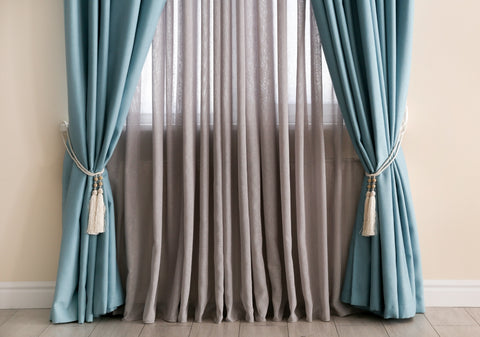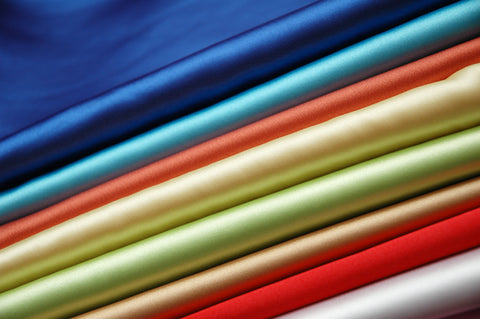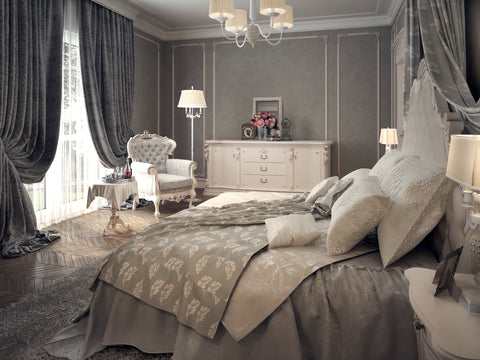What Kind of Fabric Is Best Suited For Curtains?
Windows are the eyes that open my home to the world outside. Sometimes, I do close it when the weather is not favorable. But, there are times when I want to keep it open and enjoy the scenic beauty of my garden, inviting the warm rush of sunshine and the breezy air from outside – so I choose to screen it. And curtains are a luxury that provides me privacy, while I want to keep my windows open.
Curtain fabric can be chosen – keeping the interior decor, room color, level of sunlight, upkeep, and privacy in mind. Some of them that are suitable for households are as follows:
- Cotton
- Linen
- Velvet
- Polyester blends
- Silk
- Rayon
- Lace
- Sateen
- Bamboo
- Jacquard
While some of us want JUST to dress up our living rooms and keep our windows closed (for the neighborhood may not be a pleasant sight), others have the privilege of relishing the garden outside and/or being blessed with serene outdoors worth enjoying.
Welcome to the world of curtains! There is one for every budget, taste, texture, size, design, eye, and room.

Photo by belchonock on Depositphotos
1. What Are The Most Popular Fabric Choices For Curtains?
Cotton and linen. These natural choices are breathable and allow ample amounts of sunlight to come into the room.
Cotton: This natural, eco-friendly option keeps your room cool in the summer and warm in the winter. It is washer safe, durable, and can last long.
A few disadvantages of cotton are washing will make cotton wrinkly (though ironing will remove the wrinkles easily), but if you are not interested in ironing out curtains, then this one is not for you.
Also, washing can make the curtains shrink, fade and go out of shape after some time.
Linen: This eco-friendly, sustainable option of curtain fabric is a good purchase as it is long-lasting. It is excellent for regulating temperatures as it has permeable properties.
Similar to cotton, it is easy to clean and maintain though the texture is not as soft as cotton.
Wrinkling is an annoying issue in linen fabric as it is challenging to smoothen them out.
Due to continued exposure to sunlight, it can also fade easily, just like cotton.
But the biggest drawback of linen is that it is quite expensive, so it is unsuitable for budget shoppers (only others, who don’t mind the price, can afford it).
2. What Are Few Luxury Options For Curtain Fabric?
Velvet and silk. Famous because of their luxurious look, these are your go-to options for sophisticated drapes and high-end window treatment.
Velvet: This unique textured fabric gives a rich look to your windows. A large array of velvet colors are available in the market, so it is easy for you to choose one for your room color and decor.
Their thick texture helps reduce the noise levels in your room.
The downside of this curtain fabric is that they are stain-prone and also difficult to clean.
The drape’s thickness doesn’t allow the air to enter it, making the room feel stuffy.
Also, it is quite expensive when compared to other curtain fabrics.
If you have a pet dog or a cat, then this curtain is certainly not for you as it is known to attract pet hair.
Silk: Known for its shine and radiance, silk is an expensive affair (especially when you want to dress up your windows with silk) – though its sophisticated look is a magnificent treat for your eyes!
This lightweight material helps reduce noise and insulates your room.
It’s incredibly long-lasting and doesn’t require frequent washing and ironing.
The drawbacks are they are not washer friendly and can’t be used for rooms requiring blackout.
Plus, they are prone to damage with exposure to direct sunlight, so they should be protected from sunlight.

Photo by Elnur_ on Depositphotos
3. What Are The Realistic Considerations For Selecting Your Curtain Fabric?
Consider the following factors before purchasing them – depending on one’s custom requirements and preferences.
- Size of your curtains – Measure the length and width of your windows beforehand.
- Weight of your curtains – Inspect if your curtain rod is sturdy enough to hold the curtain up.
- Noise reduction – Check if your curtain fabric has noise reduction properties.
- Protection from sunlight – check if your curtain is thick enough to stop or dim the light coming through.
- Insulation and temperature regulation – check for your curtains’ thermal regulation/insulation properties.
- Privacy – choose the thickness of the curtain accordingly.
- Low maintenance – check whether they are washer friendly or need dry cleaning.
- Durability – Inspect for the durability of your curtain material.
4. Which Curtain Fabrics Suit Living Rooms?
Polyester blended with cotton or linen is ideal for living room curtains. They are durable, easy to clean, and wrinkle-free, making them suitable for people with busy lifestyles. They are also pocket-friendly.
Linen, silk, velvet, sheer, lace, and cotton are also suitable for living rooms – each fabric, with the right color and design, has its unique beauty that adds up when you choose them for your room’s shade of color. To style up your living room, match them with the color of your upholstery and room design.
5. Which Fabric is Best Suited For The Dining Room?
Cotton – This natural fabric comes in all kinds of color hues and patterns, making it easier for you to customize it according to your dining room’s interior decor and furniture.
It is also suitable for high-traffic environments like dining rooms.
Linen – This natural textured fabric in your dining room provides a relaxed, ambient atmosphere allowing sufficient natural light and air to infiltrate, making the place look inviting and pleasant for everyday meals.
Polyester – This is most suitable for dining rooms as they are resistant to stain, easier to clean and maintain, and is also budget-friendly.
Jacquard – Made of polyester blends with other fibers, this intricately woven vibrant fabric creates an interesting visual appeal to your dining space.
Silk and Sheer fabrics are also good options for your dining area.
6. What Kind Of Curtain Fabrics Are Suitable For Bedrooms?

Photo by kuprin33 on Depositphotos
Bedrooms are places to rest and sleep. Hence, it is essential to choose your curtains wisely, so it doesn’t interfere with your sleep.
Velvet and blackout curtains are great for darkening your bedrooms, especially if you take naps in the afternoons. They are also a fantastic choice to keep the streetlight or any outside light out during the night, helping you keep your bedroom dark at night.
In addition, these curtain fabrics also provide insulation, noise reduction, and privacy.
Linen, cotton, polyester blends, sheer fabric, and silk are also great options for your bedroom.

